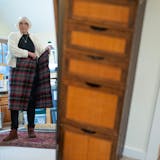There will be no walleye shore lunches on Lake Mille Lacs this season. And, unless anglers bring their own fish, no breakfasts or dinners, either.
That's one result of an unprecedented set of new regulations that will prevent anglers from keeping any walleyes or using live bait. The Minnesota Department of Natural Resources announced the catch-and-release rules Monday in its latest effort to stabilize the walleye population on the 200-square-mile lake. It's hoped the plan will help the DNR avoid a replay of the 2015 midseason shutdown of walleye fishing on Mille Lacs. But there are no guarantees.
Multiple factors have caused the walleye population to decline on the lake, including invasive species, climate change, overfishing and — according to some — slow-to-react fisheries management by the DNR. Even with the new catch-and-release rules, it's unclear how long it will take to reach the state's 2016 harvest quota of 28,600 pounds of walleye.
Presumed mortality rates, also known as hooking mortality, count against the annual total, as do the pounds of fish harvested by the eight Chippewa bands from Minnesota and Wisconsin that comanage the walleye population and set annual quotas under terms of a ruling upheld by the U.S. Supreme Court in 1999.
In part because he has doubts about the DNR's mortality rate estimates, state Sen. David Brown, R-Becker, plans to introduce a bill that would reverse the catch-and-release policy. Brown's overarching concern is legitimate: No one wants to see resorts and other area businesses continue to suffer. But the DNR has consulted with scientists across the country and, according to agency spokesman Chris Niskanen, "It's fair to say that some of the top fisheries experts have weighed in on this."
Those experts, along with fisheries managers at the DNR, are optimistic about the lake's large 2013 class of walleyes, which should be about 14 inches this summer. Those fish likely hold the key to the lake's walleye future, and their survival is critical.
To that end, Brown's time would be better spent supporting the DNR's bonding proposal for a $3.5 million fisheries management station on Mille Lacs that would help the agency meet stocking, research and outreach needs. The station also would stand as a symbol of Minnesota's commitment to a bellwether lake that's a major contributor to the state's $2 billion fishing industry.
The Legislature should also take a fresh look at Gov. Mark Dayton's welcome but short-lived 2015 proposal for property tax relief, zero-interest loans and extra tourism promotion to help Mille Lacs-area businesses.


